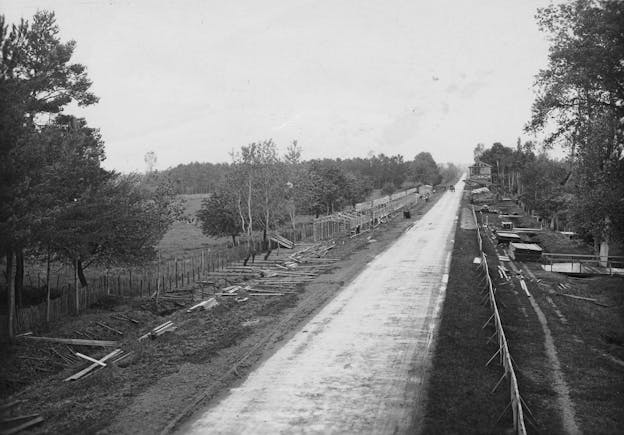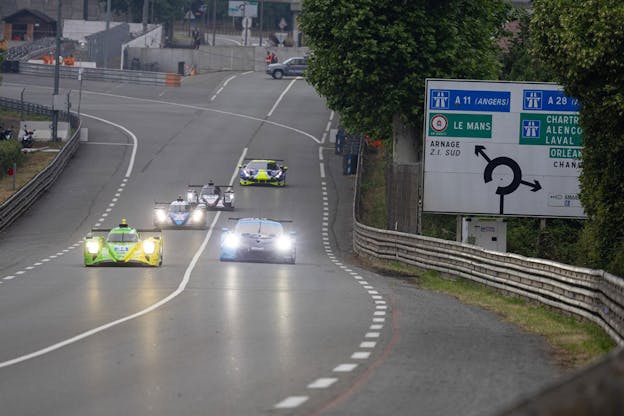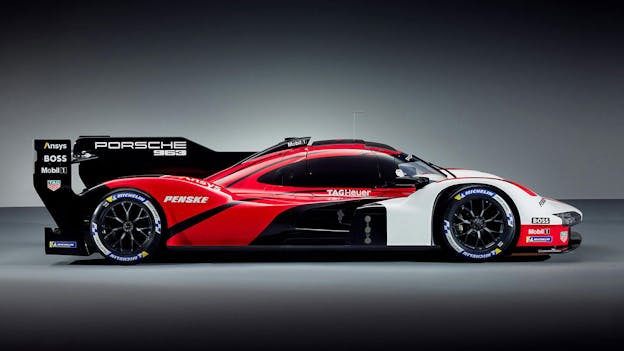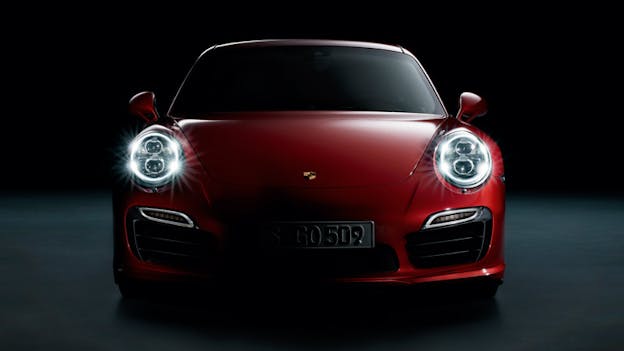Fast Track: TAG Heuer Launches The TAG Heuer Carrera Chronograph X Porsche 963, Ahead Of The 2024 24 Hours Of Le Mans
TAG Heuer celebrates its partnership with Porsche, with a watch inspired by a car created for one of the most brutally exhausting races in motorsports.
This Saturday, on June 15th, the latest running of what is arguably the most famous event on the motorsports calendar will take place. This is the 24 hours of Le Mans. The race takes place in the city of Le Mans, in northwestern France, and it has run almost without interruption since 1923 (with a hiatus during and just after World War II). The race itself is run on the Circuit de Sarthe, the same track on which the race was run in 1923 and on which it has been run ever since. The layout of the circuit, which at first was entirely public roads, has changed considerably since then but portions of the modern Circuit are still open public roads which are only closed for the race – the most famous public section is the notorious Mulsanne Straight. Twenty three drivers have died on the Circuit de Sarthe and more than half of the fatal accidents occurred on the Mulsanne Straight, which was originally over 6 kilometers long. As cars got faster, top speeds on the Straight kept increasing and finally, in 1990, for safety reasons, two chicanes were added.

The hazards of the Mulsanne Straight are sort of a microcosm of the hazards of endurance racing in general. Almost as soon as there were cars, there was endurance racing and although the cars have changed out of recognition since the 1920s the challenges are the same. To win at Le Mans you must cover more distance in a 24 hour period than any of your competitors, and this means that competing cars are driven at top speeds without a break, except for stops for fuel and other consumables, and to change drivers. Today, switching drivers is a highly choreographed maneuver calculated to take as little time as possible – around a minute – in order to keep time lost in the pits to a minimum.

Wear and tear on the cars is severe; the record for total distance covered is 3,360 miles, so the cars basically driving across the continental United States in a day. Mechanical mishaps will put you out of the running but so will any misjudgment, and as the race goes on and drivers become more and more fatigued the chances of race ending mishaps goes up. At another 24 hour race, the Rolex 24, team owner Chip Ganassi said to his drivers:
“If you run into somebody, that’s not an accident; it’s your fault. If you try to pass somebody, and you run off the track, that’s not an accident; it’s your fault. You gotta get the car all the way around, so think about that and what an ‘accident’ is. The term ‘accident’ is defined like this: if a meteor flies out of the sky and hits your car, and takes it out? That’s an accident. I accept that. Anything else is on you.”
The Car
TAG Heuer announced its partnership with Porsche in 2021, and as of the launch of the just-announced Carrera X Porsche 963, there are a total of six watches resulting from the collaboration. (Thanks to Heuer and TAG Heuer’s long history in motorsports, there are of course many other points of intersection in the histories of Porsche and TAG Heuer, not the least of which is the name “Carrera.”) The new Carrera x Porsche 963 chronograph is inspired by the latest car from Porsche to compete at the 24 hours of Le Mans – specifically, in the Hypercar category, a class for the most powerful (and most expensive) cars on the grid. Sixty two teams will compete this year; the other classes are LMP2 (Le Mans Prototype 2) and finally, the LMGTE Pro and Amateur classes, in descending order of cost and power.

The 963 is in the Hypercar class. It’s as you might expect, something of a monster. The 963, says Porsche, is the successor to the 956 and 962 closed cockpit cars from the 1980s and the family resemblance is immediately apparent, although the 963 is very different from an engineering standpoint. The 963 is a hybrid, with a 4.6 liter, water cooled, twin turbo V8 internal combustion engine combined with a regenerative energy system using lithium-ion storage. Top speed per Porsche is around 330 km/hour – a number exceeded by by some consumer hypercars, but it’s worth keeping in mind that things like fuel consumption, grip, performance in the corners and controllability are as critical if not more so than raw top speed – and though speeds were getting up to 250 mph on the Mulsanne Straight before the chicanes were put in, in 1990, the ability to hit such top speeds is no longer the key to overtaking there.
The Watch
A chronograph inspired by a cutting edge hypercar ought to embody the same values as much as possible, so the question is then how far has TAG Heuer gone in embodying in the Carrera X 963 the spirit of the 963 and of Le Mans?

The engine in the chronograph is certainly up to date – now, we have to watch it calling any mechanical chronograph cutting edge since mission critical timing in motorsports is a matter of electronic timers and sensors. Still, the movement, caliber TH20-00, looks like as solid a modern chronograph movement as you could want.
Developed from the Heuer 02, the TH20-00 has an identical power reserve, at 80 hours, but there have been some engineering upgrades that have allowed TAG Heuer to extend the warranty (not the recommended service interval, the warranty) from two to five years; the watch now winds in both directions rather than unidirectionally, which makes the automatic winding system quieter.

The watch overall has a number of design cues some of which echo Porsche and the 963 more obviously, and some of which are a little more subtle. The opened up case flanks reflect the eternal quest in motorsports for balancing mass and power, and there’s a large, bold Porsche logo set into the left side of the case. The design as a whole doesn’t break radically with some of the more well-established tropes of motorsports inspired watch design, but there’s a pleasing sense of strength in the overall design of the steel case (partly thanks to its 44mm diameter). The bezel is in forged carbon, with the Porsche logo in lume, and the tubular framework of the semi-open dial has an NAC, anthracite finish (if anyone’s interested, NAC is an electrolytic coating process).
Quite a lot of the lume features are shout outs to Le Mans and the 963, or at least to Porsche in general.

Lume in a watch that’s based on a car designed for the World Endurance Championship is a given, but there’s a nice little touch in the lume plots in the subdials. The positioning of the subdial lume plots is a shout out to the “four point principle” running lights Porsche uses on the 911 and other production cars.

This is a watch for anyone who wants something from TAG Heuer that connects to the brand’s very long history of motorsports involvment; and, of course, for anyone interested in endurance racing in general and Le Mans in particular. Thanks to a little film called “Ford Vs. Ferrari” I think there is probably a little more general awareness, at least in the USA, about how important Le Mans has been to motorsports historically. Watching the 24 Hours Of Le Mans is a great way to better understand that history, and to experience some of the raw excitement that TAG Heuer’s distilled into the watch.
The TAG Heuer Carrera Chronograph X Porsche 963: Case, stainless steel with recessed case flanks in black PVD, 44mm x 15.1mm, 49.7mm lug to lug; forged carbon tachymeter bezel; black DLC coated crown and chrono pushers. Water resistance, 100M. Movement, caliber TH20-00, 80 hour power reserve automatic with bidirectional winding. Integrated black rubber strap. Price, $9,200; find out more at TAGHeuer.com.
For full race day info, check out 24H-LeMans.com.

